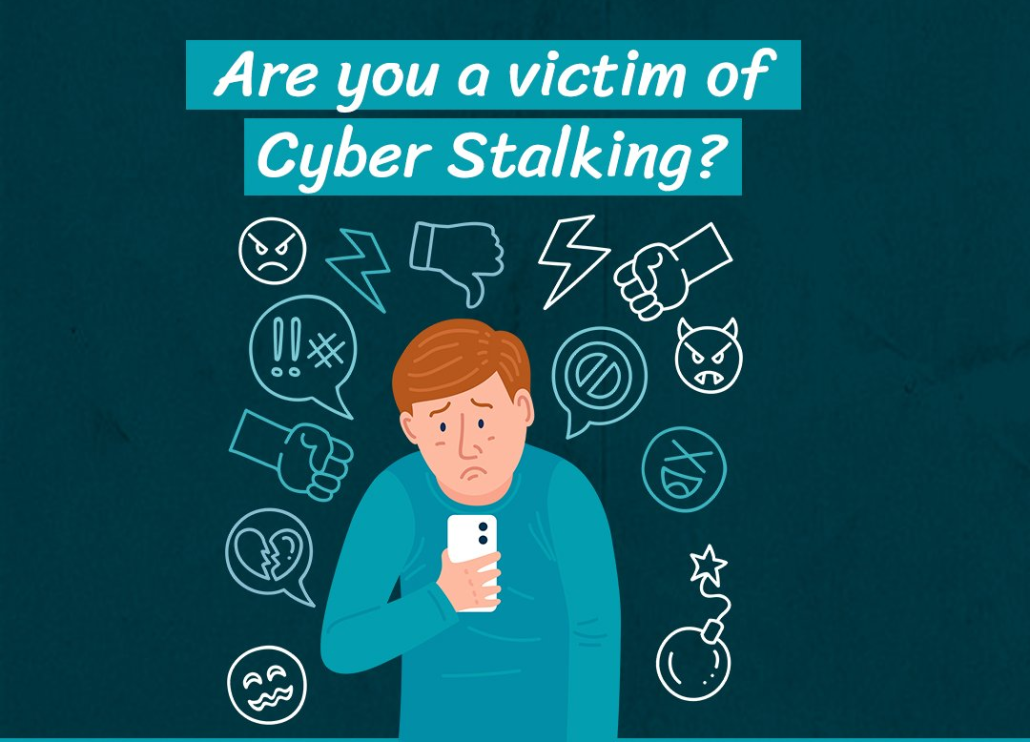Is this Stalking?
What To Look For
What is Stalking?
While this list isn’t exhaustive, you may be a victim of stalking if someone:
- Repeatedly calls your phone, including hang-ups
- Follows you and shows up wherever you are
- Sends unwanted gifts, letters, texts, or emails
- Damages your home, car, or other property
- Monitors your phone calls or computer use, possibly through spyware
- Uses technology, like hidden cameras or global positioning systems (GPS), to track where you go
- Drives by or lingers near your home, school, or work
- Threatens to hurt you, your family, friends, or pets
- Performs other actions that control, track, or frighten you
- Uses other people to try to communicate with you, like children, family, or friends
If you have been stalked, you may:
- Be fearful of what the stalker is capable of doing
- Feel vulnerable, unsafe, or not know who to trust
- Feel depressed, hopeless, angry, anxious, irritable, on-edge, and hypervigilant
- Have flashbacks, disturbing thoughts, feelings, or memories
- Feel confused, frustrated, or isolated because other people don’t understand why you are afraid
- Miss work or school for fear of seeing your stalker
- Change your normal or preferred social media habits
Stalking is a course of conduct directed at a specific person that would cause a reasonable person to feel fear.
Unlike other crimes that involve a single incident, stalking is a pattern of behavior. It is often made up of individual acts that could, by themselves, seem harmless or noncriminal, but when taken in the context of a stalking situation, could constitute criminal acts. Stalking is serious, often violent, and can escalate over time.

Stalking goes beyond following someone. It can include a variety of tactics, which can happen in person and/or online
What can you do?
While there is no universal set of steps that will work for everyone, these actions may help you feel in control of your life again:
- Call 911 for Immediate Assistance – You know yourself and your situation better than anyone. Trust your instincts and call for help if you feel you are in danger.
- Alert Others – Tell trusted friends, family, neighbors, coworkers, and/or your HR department to keep an eye out for suspicious activity and so they don’t mistakenly give out information to someone pretending to be a loved one.
- Connect with an Advocate – Advocates can often be found at local domestic violence and/or sexual assault agencies, police departments, and district attorney’s offices. Advocates can help explain local stalking laws, walk you through filing a protective order, connect you with local services, and help you develop a safety plan.
- Document Every Incident – Make a log of encounters with the stalker, hang-up calls, and public sightings. Save all messages, emails, and your call history. Consider using this incident and behavior log form from the Stalking Prevention, Awareness, & Resource Center (SPARC).
- End All Contact – Sometimes this is easier said than done, but try not to answer calls or messages, even if you are requesting that the stalker stop. Any contact may encourage the stalker to continue the stalking behavior.
- Take Threats Seriously –A direct threat against you is an obvious sign of danger. A stalker can also use threats of suicide or self-harm to manipulate you into staying in contact or a dangerous situation.
- Create a Safety Plan – Develop a personalized plan to keep yourself safe. Find help doing this here or connect with an advocate for assistance.
- Prepare Your Children – Teach your children what to do if there is an emergency, like where to hide if there is danger in the house, or how to call the police or a trusted person for help.
Cyberstalking
Cyberstalking refers to the use of the internet and other technologies to harass or stalk another person online, and is potentially a crime in the United States. This online harassment, which is an extension of cyberbullying and in-person stalking, can take the form of e-mails, text messages, social media posts, and more and is often methodical, deliberate, and persistent.
Most of the time, the interactions do not end even if the recipient expresses their displeasure or asks the person to stop. The content directed at the target is often inappropriate and sometimes even disturbing, which can leave the person feeling fearful, distressed, anxious, and worried.
What’s more, cyberstalking is a growing problem. According to the Pew Research Center 4 out of 10 Americans have experienced online harassment and 62% of them consider it a significant issue
While some of the online harassment that people in the survey experienced was just nuisance behaviors, nearly 1 in 5 Americans said they had experienced severe forms of online harassment. These actions included physical threats, sexual harassment, and stalking.1
Signs of Cyberstalking
Some signs that you are experiencing cyberstalking include someone sending you too many messages, a person sending you inappropriate messages, liking all of your old posts on social media, manipulating you into interacting with them online, or trolling you. Online impersonality, GPS tracking, threatening messages, catfishing, and doxing are also behavior associated with cyberstalking.

24 Hour Crisis Line
Live Chat
Contact
Conway Office:
603.447.2494
PO Box 1972
Conway, NH 03818
All services are offered free of charge and are strictly confidential.
